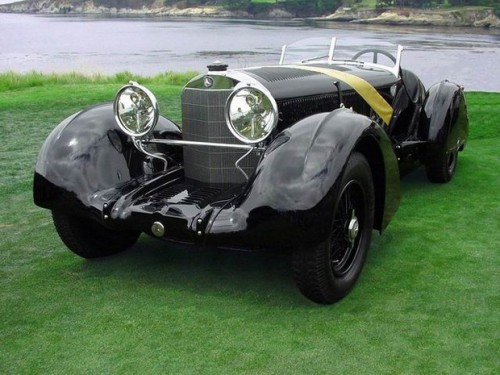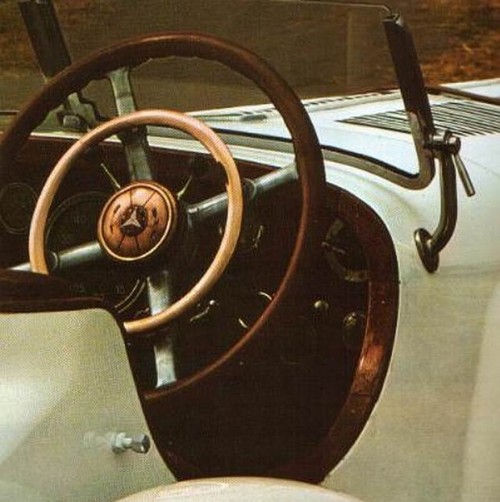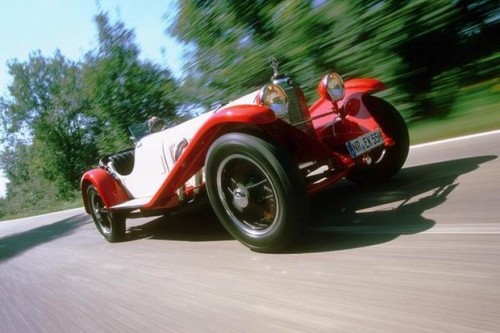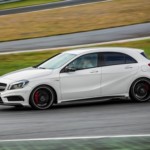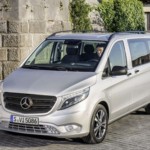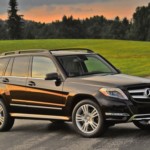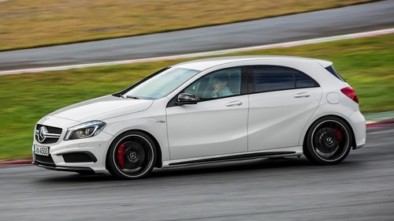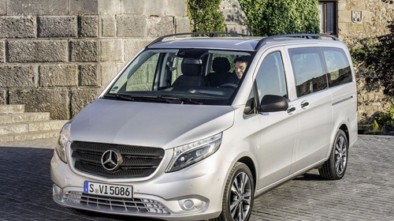Mercedes SSK 1928 - 1932 - Model history

Mercedes ssk
If you squeeze the gas to the board on the Mercedes SSK, hold on tight. You dared to wake the wild beast. Get ready for a huge noise, because Roots is just about to start screaming.
The complex development path that led to the KJC model was elaborated in detail by Karl Ludwigsen in his book Quicksilver Century. In short, the newly united Mercedes and Benz in the late 20s rejoined the competition, primarily thanks to great successes in the period up to 1914. Model S (as Sport) was created from model K (as Kurz - short) by the construction of a new significantly lower chassis.
By increasing the volume from 6789 to 7069 cm3, we got another S in the name (SS as double sport, double sport, or super sport). The final name of the KJC is obtained by shortening the wheelbase of the four-seater from 340 cm to 295 cm two-seater, which is shorter than the K model.
In spite of everything Mercedes SSK is not a small car. Approaching, the first impression is the size and presence of a car that weighs 1696 kg. The car is so big that it really needs to climb into it. The sides, without the door, are cut out, but you still need an athletic jump to board.
The huge steering wheel, located on the right side of this car, though most of them had a steering wheel on the left, makes driver entry almost impossible. Once you enter the SSK you feel trapped between the handbrake, the transmission and the steering wheel, which is dangerously close to your chest. The front seats are replaced by a bench, thickly lined with black leather, which is profiled to provide enough space for the elbow of the driver when changing gears.
Despite the external dimensions, the interior is very cramped. The basic technical function of this old Mercedes is a pre-charge engine, which also determines the driving style. It's a hell of a feeling when you squeeze the gas up to the board and the compressor starts blowing. Nothing happens here in a split second, but when the KJC starts pulling, it pulls wildly. There is also a huge noise from which the squeaking sound of compressed air crystallizes.
If you want to experience something similar try putting your ear to the wall and listen to the sound of a drill bit while drilling a hole with an electric drill. The idea of pre-charging has deep roots in Mercedes-Benz's history. Since 1915, Daimler has been experimenting with various forms of air preloading to make warplanes able to fly at higher altitudes.
Piston compressors proved to be problematic, but in 1918 a Roots compressor came out which proved to be very efficient. Mercedes began installing pre-charging engines in cars marked 6/25/40 (1570 cm3) and 10/40/65 (2600 cm3), but it was the models S, SS and SSK that popularized the use of compressors.
And other companies, like Alfa Romeo, Bugatti and Bentley have reached a new concept. This 7069 cm3 beast without compressor develops 170 bhp at 3200 rpm and with a compressor 310 bhp at 3300 rpm. Although there is no specific data, it is easy to calculate that at 3300 rpm the engine produced 660 Nm, so to assume that the maximum torque was greater than 700 Nm. This enormously high torque propelled the rear wheels through a four-speed manual transmission without synchrony. One thing is for sure. Physical strength is required to manage this ugliness.
As the speed increases, so do the vibrations, so above 140 km / h the instrument panel starts to vibrate and the steering wheel shakes dangerously. But the engine is just waking up, as shown by the tachometer hand, whose position is between 2000 and 2500 rpm at top speed. This suggests that at a maximum of 3500 rpm the speed should be at least 190 km / h. It is recorded in history that in Brazil in 1932, Hans Stuck set the speed record with the SSKL model, reaching 206 km / h.
Cruising at "normal" speeds is easy. Keep going and from time to time step on the accelerator just enough to feel the excitement and sound that comes when the compressor starts. But even without the compressor on, it impresses with a giant torque of 500 rpm and up. The acceleration with which the car emerges from sharp curves is extremely impressive.
Although pre-charging is a major attraction in driving, the other aspects are no less special. As a rule, such powerful cars of outdated construction are extremely difficult to drive. The Mercedes SSK was definitely one of the most successful pre-war race cars. Only 40 copies have been produced in its short history, and today only a few originals are kept in running order. The closest and most accessible to the common man is the one at the Mercedes Museum in Stuttgart. Replicas of this car are also very popular, so what you see on the road and it looks like SSK doesn't necessarily have to be the legendary original from Stuttgart.
Source: www.vidiauto.com
Recommendation of similar texts:

Hi there, I am Mladen and I am an auto enthusiast. I started this blog years ago to help like minded people share information about latest cars, car servicing ideas, used car info, exotic cars, and auto technology. You will find helpful articles and videos on a wide variety of cars - Audi, Mercedes, Toyota, Porsche, Volvo, BMW and much more. Ping us if you have anything cool to share on latest cars or on how to make older cars more efficient, or just want to say hi!

